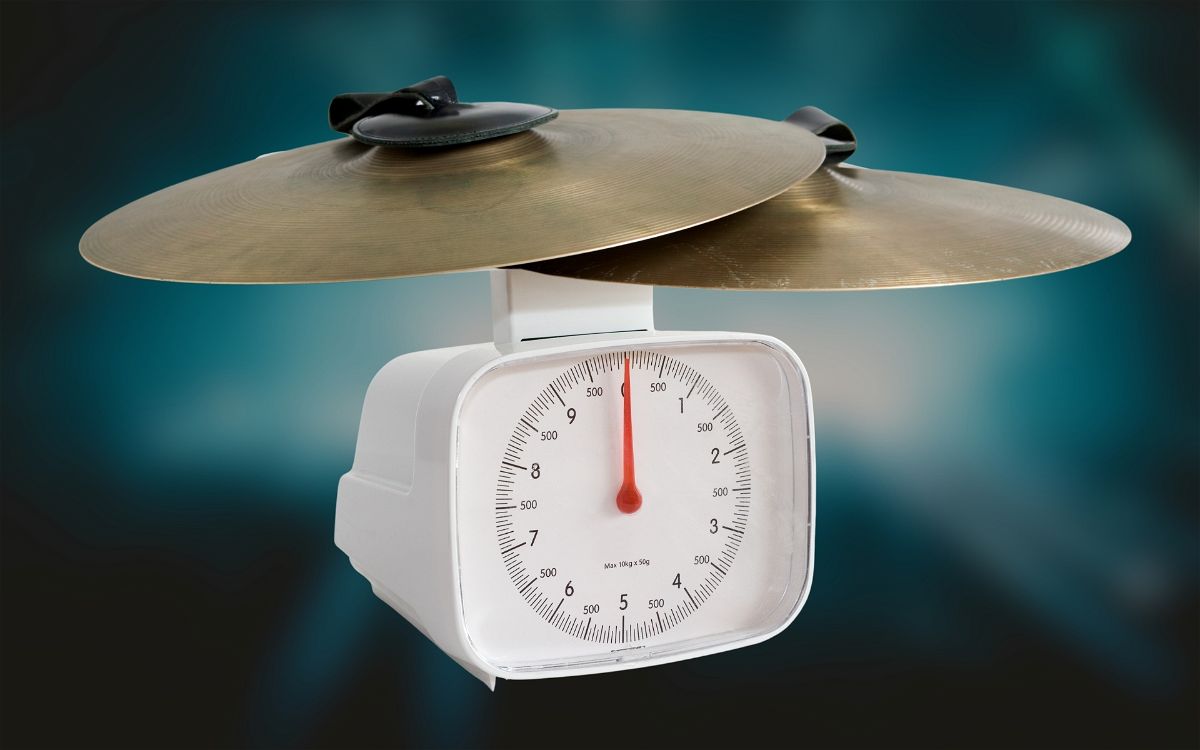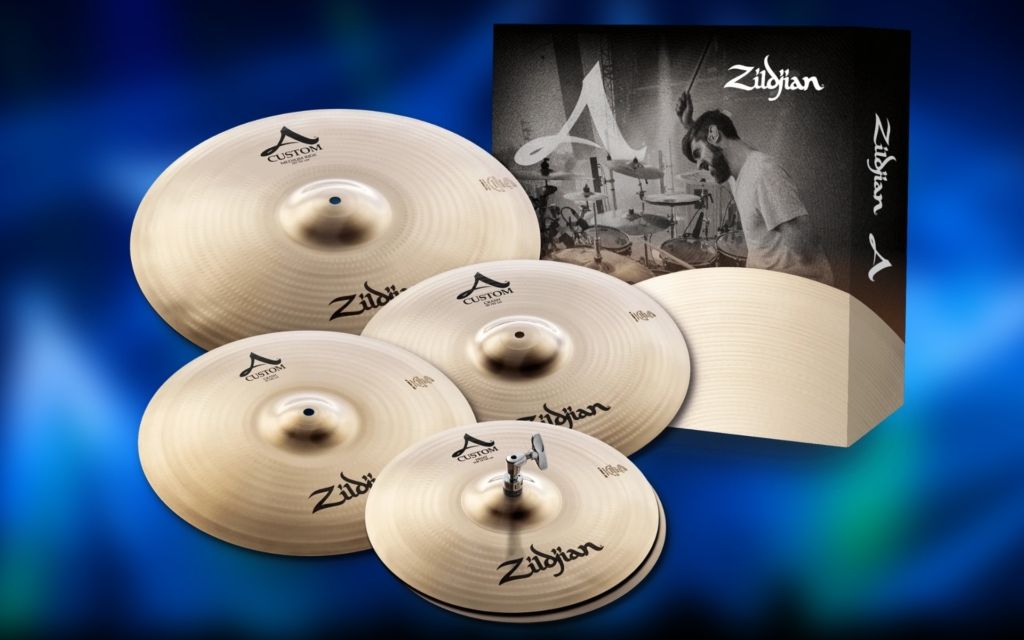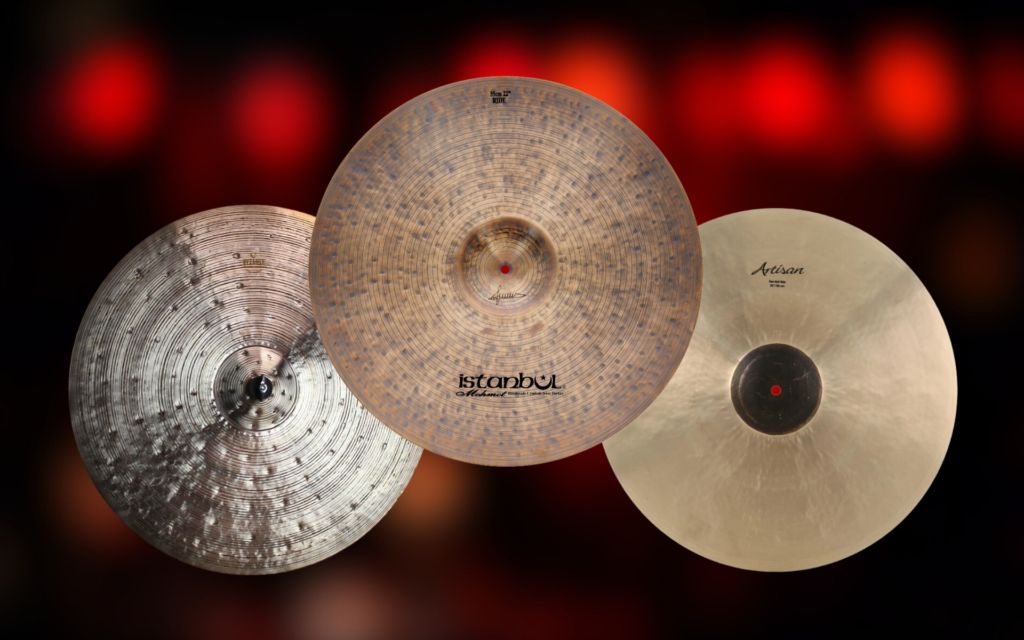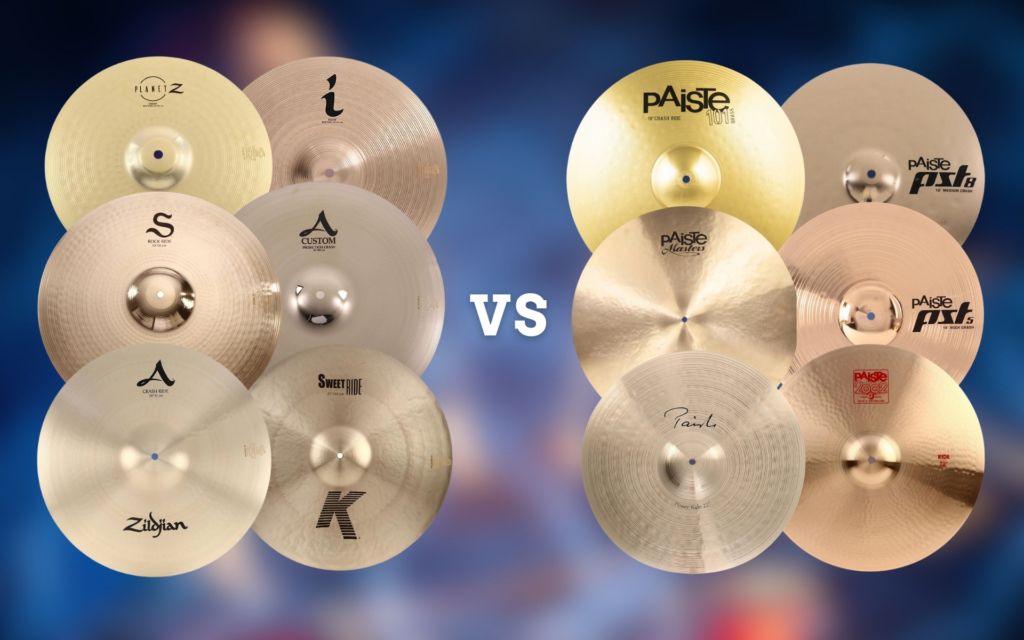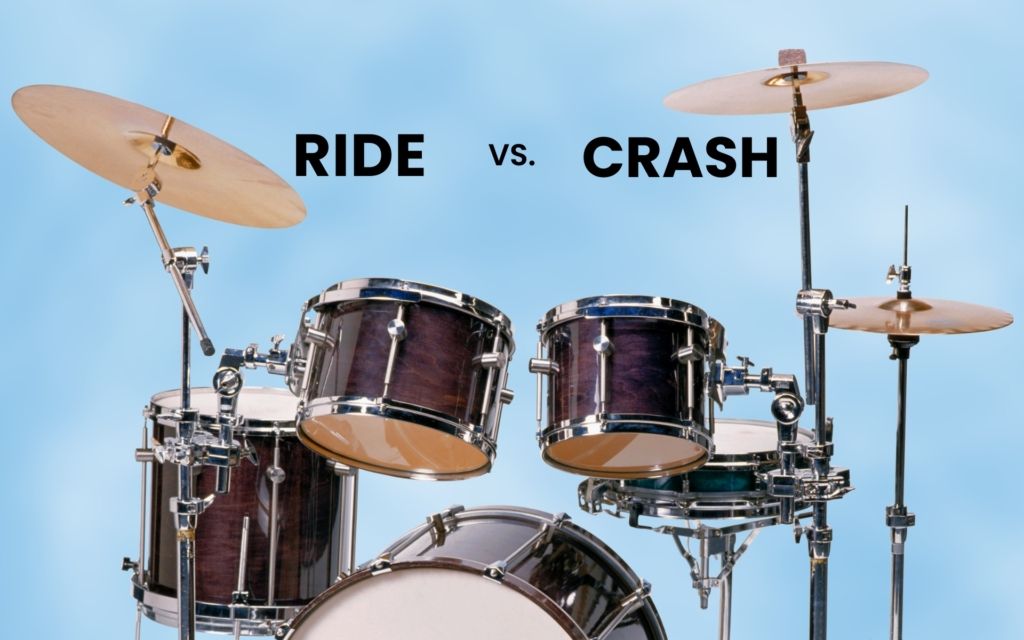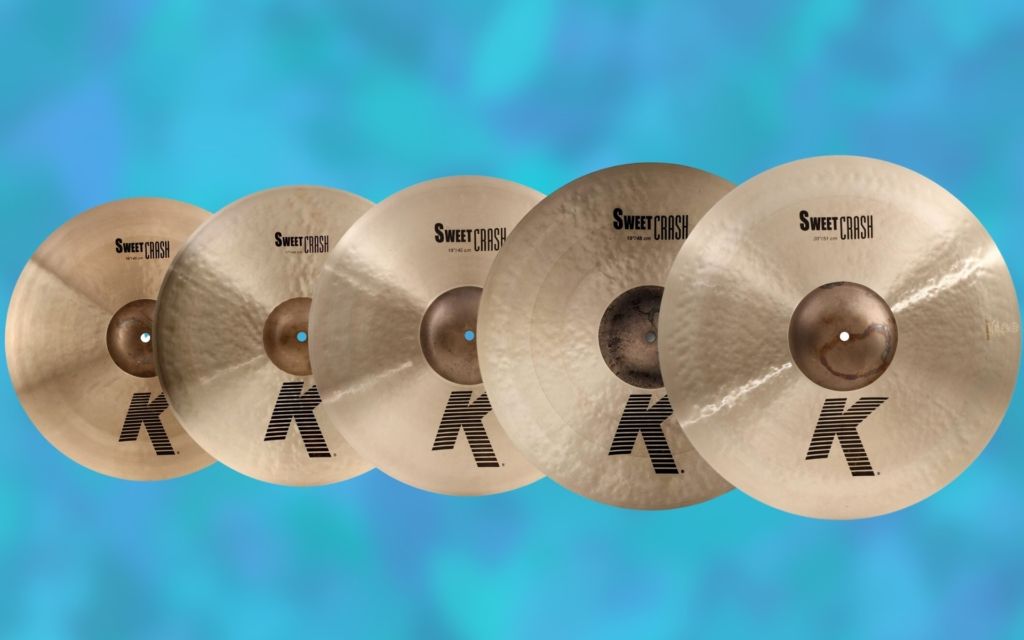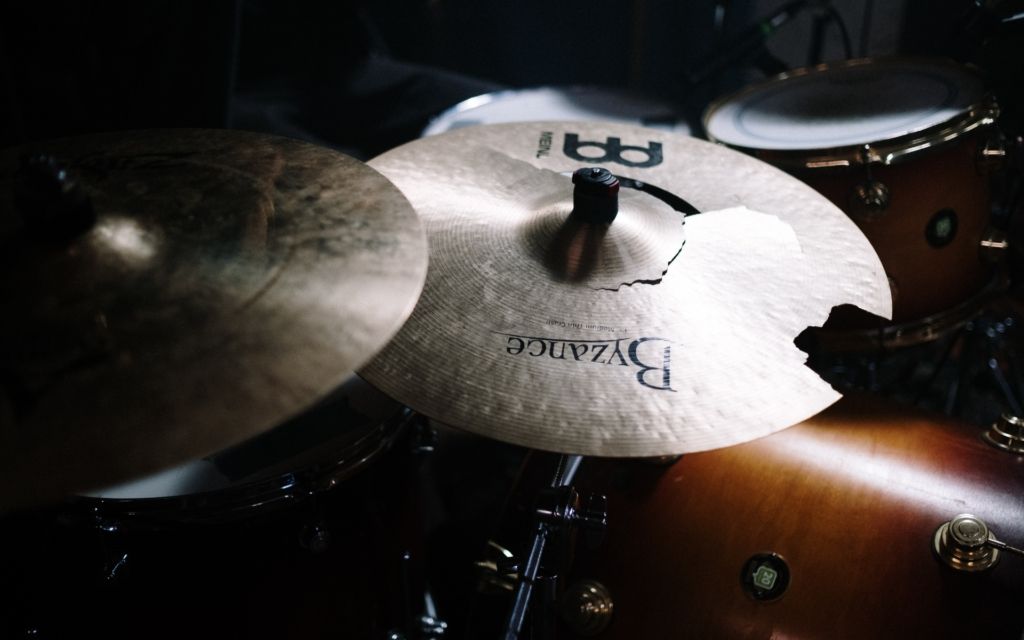Cymbals come in all different shapes and sizes. While we often associate how they sound with their shape and design, weight also plays a huge role.
Heavier cymbals have drastically different qualities compared to lighter ones, and this is typically how you’ll find a difference between two identical cymbals of the same shape and size.
In this guide, I’ll explain exactly how weight affects your cymbals. I’ll also give you all the weight ranges that you can expect different cymbals to have.
Contents
Cymbal Weight Chart
Here’s a quick summary of all the weight ranges of cymbals:
| Diameter | Lowest Weight | Highest Weight |
| 14” | 800g (top) 1000g (bottom) | 1400g (top) 1600 (bottom) |
| 15” | 1000g (top) 1000g (bottom) | 1500g (top) 1800g (bottom) |
| 16” | 600g | 1800g |
| 17” | 1000g | 1800g |
| 18” | 1200g | 2400g |
| 19” | 1400g | 2700g |
| 20” | 1500g | 2900g |
| 21” | 1700g | 3200g |
| 22” | 1900g | 3500g |
How Does Weight Affect Cymbals?
Thicker cymbals are always heavier. They have more material, causing the vibrations to be quicker when you strike them. This leads to louder volume.
I tend to use heavier cymbals when I play with rock and metal bands, as they cut through mixes much easier.
Lighter cymbals are softer due to them having lower response times when you strike them. They tend to be washier as well.
Different Common Cymbal Weights
14” Hi-Hats
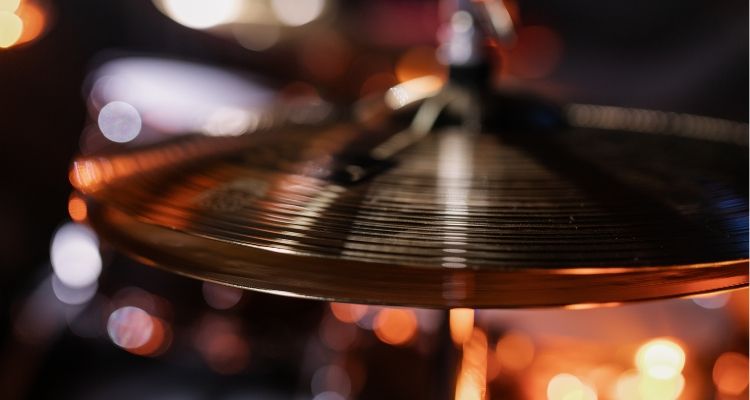
With hi-hats being some of the smallest cymbals, you’d assume that they’re the lightest. However, they actually need to be a bit thicker than crash cymbals so that you get good stick articulation. This makes them heavier than you’d expect.
You also have to consider that hi-hats come in pairs. The top cymbal is usually lighter than the bottom.
Most top cymbals weigh between 800 and 1400 grams. Most bottom cymbals weigh between 1000 and 1600 grams.
15” Hi-Hats
The same rules apply with 15” hi-hats, but the weights will be slightly heavier due to the larger diameter.
So, top cymbals will weigh between 1000 and 1500 grams, while bottom cymbals may weigh between 1000 and 1800 grams. Keep in mind that some 15” pairs are a lot thinner, so they could weigh the same as a 14” pair.
16” Hi-Hats and Crash Cymbals
I’ve found 16” hi-hats to be slightly different in the weight area. Since they’re so large on a hi-hat stand, cymbal brands tend to make them quite thin. Otherwise, they’d feel far too bulky in your setup.
Most 16” hi-hat pairs I’ve seen have similar weight ranges to 15” pairs – between 1000 and 1500 grams for the top cymbal and 1000 and 1800 grams for the bottom one.
You’ll also find crash cymbals of this size, which are typically much lighter than hi-hats. Extra light crash cymbals will start at 600 grams, while the thicker ones may be up to 1400 grams.
17” Crash
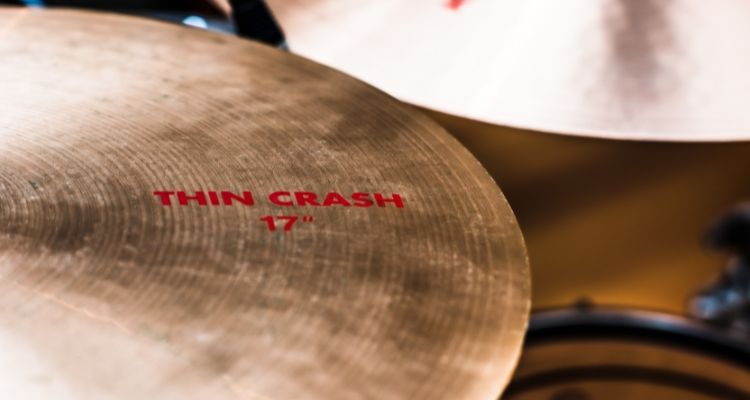
I’ve always known 17” crashes to be a fairly uncommon size, and most of them have a light or medium weight. I’ve only ever seen a few heavier picks.
Most 17” crash cymbals weigh between 1000 grams and 1800 grams. You may find a few outliers, though.
18” Crash
Here’s where things start to open up. 18” crash cymbals are incredibly common, so you’ll find a very wide range of weights across all of them.
The lightest 18” crash I’ve ever seen was 1200 grams, while the heaviest one was 2400 grams. That heavy one sounded like a huge explosion every time it got played.
19” Crash
19” crashes are one of my favorite cymbal types. They’re large enough to play the surface and get articulate tones, but they still produce strong crashing and washing sounds.
Typically, they’ll be between 1400 and 2700 grams.
20” Ride

A ride cymbal is usually a lot heavier than any other cymbal type. They need the extra thickness so that you can get articulate sounds when striking the bow. They also have larger bells that add to the overall weight.
You do get thin ride cymbals, though, with the lightest ones weighing around 1500 grams. Heavier 20” rides weigh up to 2900 grams.
21” Ride
21” rides are slightly heavier, with the lightest ones weighing around 1700 grams and the heaviest weighing around 3200 grams.
This is another unique size that you don’t see drummers using all that often, but I love how unique they sound compared to 20” and 22” ride cymbals.
22” Ride
You do get larger ride cymbals, but 22” rides are considered the standard large option. The lighter ones start at 1900 grams, while the heaviest one I’ve seen was 3500 grams.
What Are Cymbals Made From?
Most cymbals are made from a combination of copper and tin. The more tin there is in a cymbal, the more complex and musical it will sound.
A B8 alloy cymbal will have 92% copper and 8% tin, while a B20 alloy cymbal will have 80% copper and 20% tin. That’s why B20 cymbals tend to sound the best.
Other Factors That Affect Cymbal Sounds

Taper
The taper refers to the part that goes from the bell to the edge of a cymbal. All cymbals have a change of thickness in this area.
If that change of thickness is drastic, the cymbal will have a shorter decay and produce more overtones. If the change of thickness is subtle, the cymbal will sound washy and resonant.
Bell
Most cymbals have raised bells in the center. The bigger the bell is, the louder the cymbal is. A larger bell will also give the cymbal a quicker response time.
That’s why low-bell cymbals resonate for longer and tend to sound larger. They don’t sing as quickly when you strike them.
Conclusion
From my experience, the only time you really need to worry about cymbal weight is when you’re looking at two cymbals of the same size. Each will have unique qualities depending on how much they weigh.
Other than that, it’s easy enough to choose a cymbal that you like based on the type, shape, materials, and overall design.
With that said, it can also be useful to know cymbal weight ranges when you’re buying cymbals to travel with.

